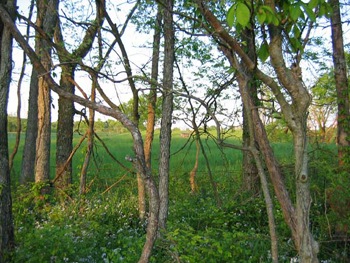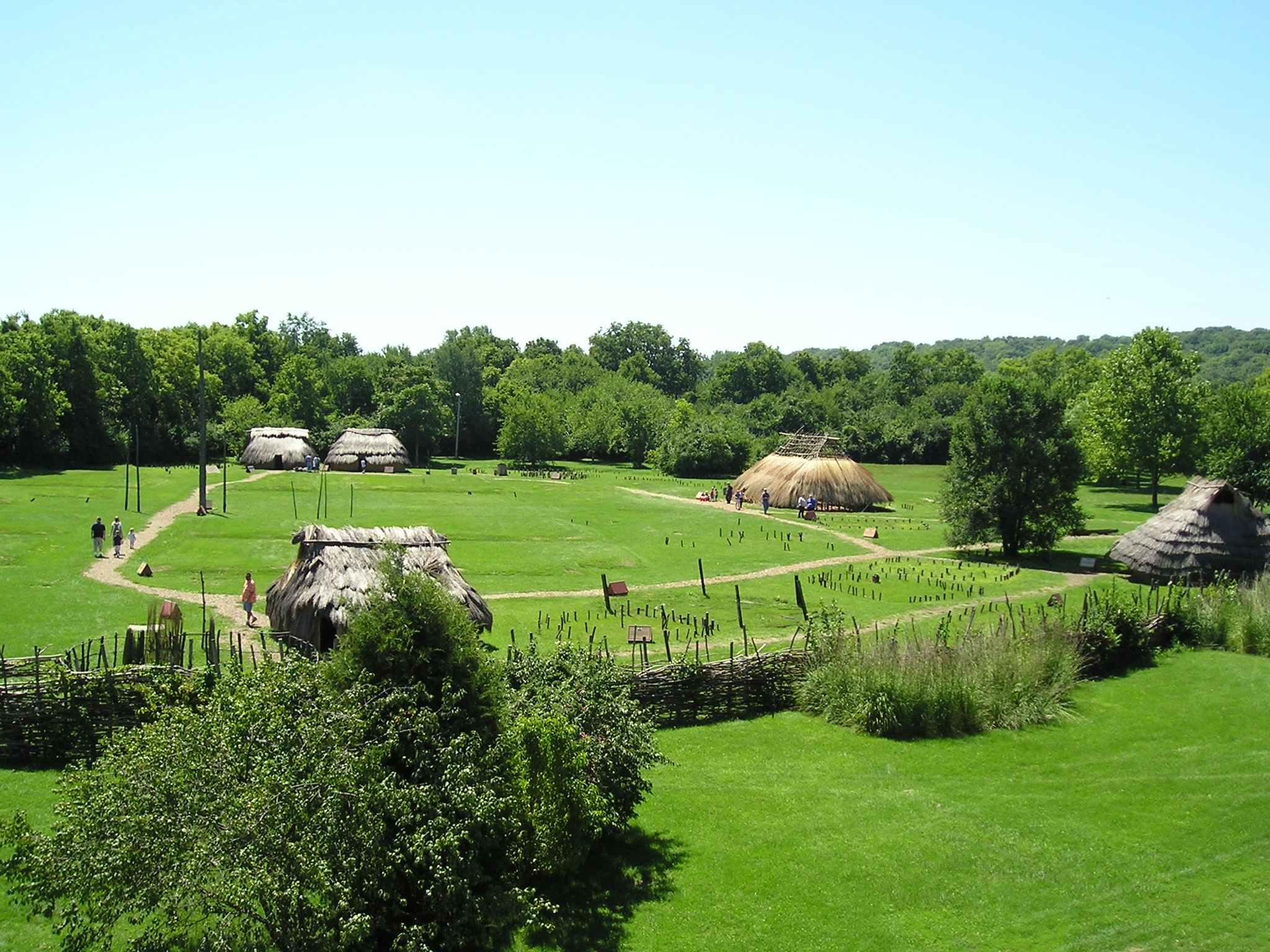|
Cox Site
The Cox site ( 15WD107) is a Middle Fort Ancient culture (1200 to 1400 CE) archaeological site located in Woodford County, Kentucky, in the Bluegrass region of the state. The site is located on a large ridge and is approximately by , although there may be other unexplored sections to the north. Not enough investigations at the site have happened for archaeologists to be able to determine the pattern, shape or layout of the proposed village site. The finding of shell tempered pottery and distinctive triangular-shaped arrowheads along with radiocarbon dates has allowed researchers to date the site. Two burials have been located at the site; however, one was a flexed burial found by the owner of the site and the other was an extended burial found by archaeologists during investigations. See also * Muir site * Thompson site The Thompson site is a Fort Ancient culture archaeological site located near South Portsmouth in Greenup County, Kentucky, next to the Ohio River across from th ... [...More Info...] [...Related Items...] OR: [Wikipedia] [Google] [Baidu] |
Woodford County, Kentucky
Woodford County is a county located in the U.S. state of Kentucky. As of the 2020 census, the population was 26,871. Its county seat is Versailles. The area was home to Pisgah Academy. Woodford County is part of the Lexington-Fayette, KY Metropolitan Statistical Area. It is located in the heart of the Bluegrass region of Kentucky. History The county was formed from a part of Fayette County, Virginia in 1788. It was named for William Woodford, an American Revolutionary War general from Virginia who died while a prisoner of war in 1780. It was the last of the original nine counties established that formed the Commonwealth of Kentucky in 1792. Scott County was formed from part of the county in 1792. Franklin County took another part of the county in 1794. Queen Elizabeth II stayed in Woodford County at Lane's End Farm in May 2007. She also attended the Kentucky Derby in Louisville. Pisgah Academy Pisgah Academy was a school in Woodford County. It was established by Col. Alex ... [...More Info...] [...Related Items...] OR: [Wikipedia] [Google] [Baidu] |
Fort Ancient Culture
Fort Ancient is a name for a Native American culture that flourished from Ca. 1000-1750 CE and predominantly inhabited land near the Ohio River valley in the areas of modern-day southern Ohio, northern Kentucky, southeastern Indiana and western West Virginia. Although a contemporary of the Mississippian culture, they are often considered a "sister culture" and distinguished from the Mississippian culture. Although far from agreed upon, there is evidence to suggest that the Fort Ancient Culture were not the direct descendants of the Hopewellian Culture. It is suspected that the Fort Ancient Culture introduced maize agriculture to Ohio. The Fort Ancient Culture were most likely the builders of the Great Serpent Mound. Name The name of the culture originates from the Fort Ancient, Ohio archeological site. However, the Fort Ancient Site is now thought to have been built by Ohio Hopewellian people. It was likely occupied later by the succeeding Fort Ancient culture. The site is loc ... [...More Info...] [...Related Items...] OR: [Wikipedia] [Google] [Baidu] |
Smithsonian Trinomial
A Smithsonian trinomial (formally the Smithsonian Institution Trinomial System, abbreviated SITS) is a unique identifier assigned to archaeological sites in many states in the United States. They are composed of one or two digits coding for the state, typically two letters coding for the county or county-equivalent within the state, and one or more sequential digits representing the order in which the site was listed in that county. The Smithsonian Institution The Smithsonian Institution ( ), or simply the Smithsonian, is a group of museums and education and research centers, the largest such complex in the world, created by the U.S. government "for the increase and diffusion of knowledge". Founded ... developed the site number system in the 1930s and 1940s, but it no longer maintains the system. Trinomials are now assigned by the individual states. The 48 states then in the union were assigned numbers in alphabetical order. Alaska was assigned number 49 and Hawaii was assigne ... [...More Info...] [...Related Items...] OR: [Wikipedia] [Google] [Baidu] |
Archaeological Site
An archaeological site is a place (or group of physical sites) in which evidence of past activity is preserved (either prehistoric or historic or contemporary), and which has been, or may be, investigated using the discipline of archaeology and represents a part of the archaeological record. Sites may range from those with few or no remains visible above ground, to buildings and other structures still in use. Beyond this, the definition and geographical extent of a "site" can vary widely, depending on the period studied and the theoretical approach of the archaeologist. Geographical extent It is almost invariably difficult to delimit a site. It is sometimes taken to indicate a settlement of some sort although the archaeologist must also define the limits of human activity around the settlement. Any episode of deposition such as a hoard or burial can form a site as well. Development-led archaeology undertaken as cultural resources management has the disadvantage (or the ben ... [...More Info...] [...Related Items...] OR: [Wikipedia] [Google] [Baidu] |
Bluegrass Region
The Bluegrass region is a geographic region in the U.S. state of Kentucky. It makes up the central and northern part of the state, roughly bounded by the cities of Frankfort, Paris, Richmond and Stanford. The Bluegrass region is characterized by underlying fossiliferous limestone, dolomite, and shale of the Ordovician geological age. Hills are generally rolling, and the soil is highly fertile for growing pasture. Since the antebellum years, the region has been a center for breeding quality livestock, especially thoroughbred race horses. Since the late 20th century, the area has become increasingly developed with residential and commercial properties, particularly around Lexington, the business center. Although bluegrass music is popular throughout the region, the genre is indirectly named for the state rather than the region. History Before European-American settlement, various cultures of Indigenous peoples of the Americas adapted to the region. The region had mostly a sa ... [...More Info...] [...Related Items...] OR: [Wikipedia] [Google] [Baidu] |
Shell Tempered Pottery
Mississippian culture pottery is the ceramic tradition of the Mississippian culture (800 to 1600 CE) found as artifacts in archaeological sites in the American Midwest and Southeast. It is often characterized by the adoption and use of riverine (or more rarely marine) shell- tempering agents in the clay paste. Shell tempering is one of the hallmarks of Mississippian cultural practices. Analysis of local differences in materials, techniques, forms, and designs is a primary means for archaeologists to learn about the lifeways, religious practices, trade, and interaction among Mississippian peoples. The value of this pottery on the illegal antiquities market has led to extensive looting of sites. Materials and techniques Mississippian culture pottery was made from locally available clay sources, which often gives archaeologists clues as to where a specific example originated. The clay was tempered with an additive to keep it from shrinking and cracking in the drying and firing pro ... [...More Info...] [...Related Items...] OR: [Wikipedia] [Google] [Baidu] |
Muir Site
The Muir site, (15JS86), is an Early Fort Ancient culture archaeological site located in Jessamine County, Kentucky, in the Bluegrass region of the state. It was occupied from about 1010 to 1255 CE during the Osborne Phase of the local chronology. The site is near Jessamine Creek, on top of a broad ridge. Unlike later Fort Ancient villages, which are more compact, the Muir site structures were spread out over the ridge top. These structures were rectangular with single set post construction, as opposed to Mississippian culture, Mississippian style wall trench construction. Within the houses were to deep floor basins with centrally located hearths for cooking and heating. Pottery found at the Muir site was Temper (pottery), limestone-tempered, unlike some later Fort Ancient pottery which became mussel Shell tempered pottery, shell tempered after contact with Mississippian cultures. See also * Cox site * Thompson site References External links The Cox site in relation to the nea ... [...More Info...] [...Related Items...] OR: [Wikipedia] [Google] [Baidu] |
Thompson Site
The Thompson site is a Fort Ancient culture archaeological site located near South Portsmouth in Greenup County, Kentucky, next to the Ohio River across from the mouth of the Scioto River. It was occupied during the Croghan Phase (1100 to 1200 CE) of the local chronology and was a contemporary of Baum Phase sites in the Scioto River valley. See also * Hardin Village site The Hardin Village site (15GP22) is a Fort Ancient culture Montour Phase archaeological site located on a terrace of the Ohio River near South Shore in Greenup County, Kentucky. It is located within the Big Sandy Management Area along with the ... * Bentley site * Hansen site * Ronald Watson Gravel site * Cleek–McCabe site References Fort Ancient culture Archaeological sites in Kentucky Buildings and structures in Greenup County, Kentucky Native American history of Kentucky {{US-archaeology-stub ... [...More Info...] [...Related Items...] OR: [Wikipedia] [Google] [Baidu] |
Archaeological Sites In Kentucky
Archaeology or archeology is the scientific study of human activity through the recovery and analysis of material culture. The archaeological record consists of Artifact (archaeology), artifacts, architecture, biofact (archaeology), biofacts or ecofacts, archaeological site, sites, and cultural landscapes. Archaeology can be considered both a social science and a branch of the humanities. It is usually considered an independent academic discipline, but may also be classified as part of anthropology (in North America – the four-field approach), history or geography. Archaeologists study human prehistory and history, from the development of the first stone tools at Lomekwi in East Africa 3.3 million years ago up until recent decades. Archaeology is distinct from palaeontology, which is the study of fossil remains. Archaeology is particularly important for learning about prehistoric societies, for which, by definition, there are no written records. Prehistory includes ove ... [...More Info...] [...Related Items...] OR: [Wikipedia] [Google] [Baidu] |




.jpg)